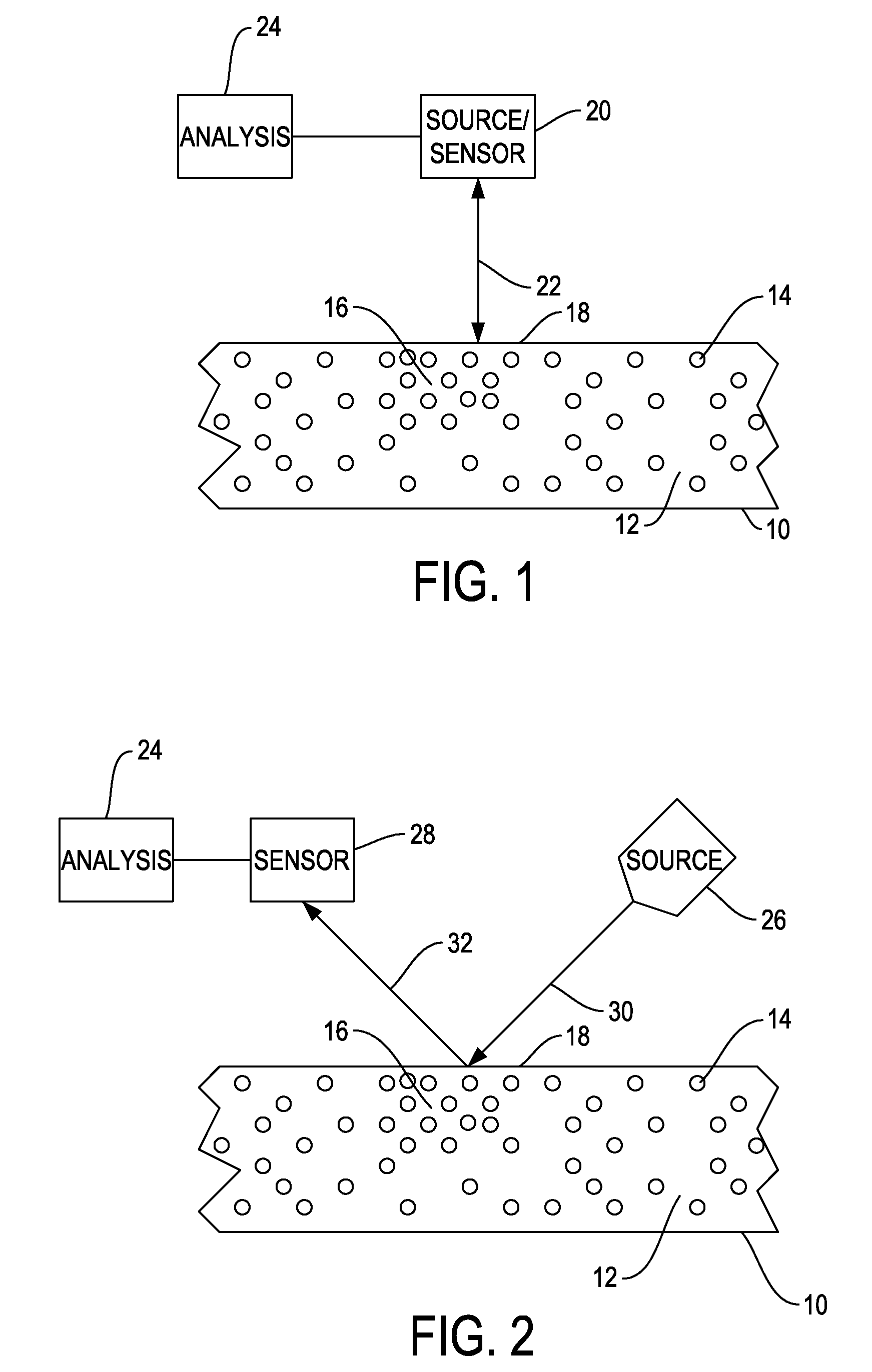Detection of discontinuity densities in composite materials
a composite material and density detection technology, applied in the direction of optical radiation measurement, porous material analysis, suspensions, etc., can solve the problems of large size (the size of a refrigerator) and high cost of niche research apparatus
- Summary
- Abstract
- Description
- Claims
- Application Information
AI Technical Summary
Benefits of technology
Problems solved by technology
Method used
Image
Examples
Embodiment Construction
[0022]FIGS. 1-4 show embodiments of the invention with reference to a test sample 10. Reference numbers for the test sample are the same throughout. Test sample 10 is shown in cross-section. It includes a substrate 12 having micro-inclusions 14 suspended therein. Test sample 10, substrate, and micro-inclusions 14 are not shown to scale. In actual use, micro-inclusions 14 will be much smaller and present at a much greater concentration. Region 16 of sample 10 has a micro-inclusion gradient having many more micro-inclusions 14 at a surface 18 of the sample 10. While application of this technology is particularly applicable to micro-inclusions dispersed in a polymer matrix, it is equally applicable to any group of material agglomerates in suspension in a bulk material where the agglomerates are intended to be arranged with a certain uniformity, absence of uniformity, or gradient.
[0023]A gradient in micro-inclusion concentration can be detected by its effect on electromagnetic waves ref...
PUM
 Login to View More
Login to View More Abstract
Description
Claims
Application Information
 Login to View More
Login to View More - R&D
- Intellectual Property
- Life Sciences
- Materials
- Tech Scout
- Unparalleled Data Quality
- Higher Quality Content
- 60% Fewer Hallucinations
Browse by: Latest US Patents, China's latest patents, Technical Efficacy Thesaurus, Application Domain, Technology Topic, Popular Technical Reports.
© 2025 PatSnap. All rights reserved.Legal|Privacy policy|Modern Slavery Act Transparency Statement|Sitemap|About US| Contact US: help@patsnap.com



